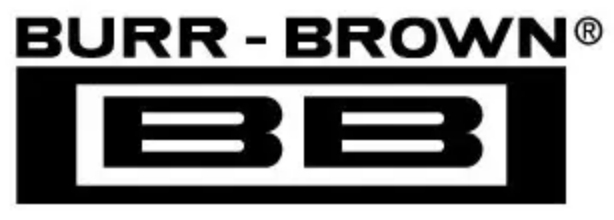Under the situation outlined so far, it would not be possible
to achieve a zero volt input or a full-scale input regardless of
where the pointing device is on the touch screen because
some voltage is lost across the internal switches. In addition,
the internal switch resistance is unlikely to track the resis-
tance of the touch screen, providing an additional source of
error.
This situation can be remedied as shown in Figure 4. By
setting the SER/DFR bit LOW, the +REF and –REF inputs
are connected directly to Y+ and Y–. This makes the analog-
to-digital conversion ratiometric. The result of the conver-
sion is always a percentage of the external resistance, re-
gardless of how it changes in relation to the on-resistance of
the internal switches. NOTE: There is an important consid-
eration regarding power dissipation when using the
ratiometric mode of operation. See the Power Dissipation
section for more details.
GND
+V
CC
processor and the converter consists of 8 clock cycles. One
complete conversion can be accomplished with three serial
communications, for a total of 24 clock cycles on the DCLK
input.
The first 8 clock cycles are used to provide the control byte
via the DIN pin. When the converter has enough information
about the following conversion to set the input multiplexer,
switches, and reference inputs appropriately, the converter
enters the acquisition (sample) mode and, if needed, the
internal switches are turned on. After three more clock
cycles, the control byte is complete and the converter enters
the conversion mode. At this point, the input sample/hold
goes into the hold mode and the internal switches may
turn off. The next 12 clock cycles accomplish the actual
analog-to-digital conversion. If the conversion is ratiometric
(SER/DFR LOW), the internal switches are on during the
conversion. A 13th clock cycle is needed for the last bit of
the conversion result. Three more clock cycles are needed to
complete the last byte (DOUT will be LOW). These will be
ignored by the converter.
Control Byte
UL
UR
V
REF HI
WIPER
A/D Converter
IN
LO
V
REF LO
+V
CC
LL
LR
Also shown in Figure 5 is the placement and order of the
control bits within the control byte. Tables III and IV give
detailed information about these bits. The first bit, the ‘S’ bit,
must always be HIGH and indicates the start of the control
byte. The ADS7845 will ignore inputs on the DIN pin until
the start bit is detected. The next three bits (A2 - A0) select
the active panel drivers (see Tables I and II and Figure 2).
The MODE bit determines the number of bits for each
conversion, either 12 bits (LOW) or 8 bits (HIGH).
The SER/DFR bit controls the reference mode: either single-
ended (HIGH) or differential (LOW). (The differential mode
is also referred to as the ratiometric conversion mode.) In
BIT 7
(MSB)
BIT 6
A2
BIT 5
A1
BIT 4
A0
BIT 3
BIT 2
BIT 1
PD1
BIT 0
(LSB)
PD0
GND
GND
+V
CC
GND
FIGURE 4. Simplified Diagram of Differential Reference
(SER/DFR LOW).
As a final note about the differential reference mode, it must
be used with +V
CC
as the source of the +REF voltage and
cannot be used with V
REF
. It is possible to use a high
precision reference on V
REF
and single-ended reference
mode for measurements which do not need to be ratiometric.
Or, in some cases, it could be possible to power the con-
verter directly from a precision reference. Most references
can provide enough power for the ADS7845, but they might
not be able to supply enough current for the external load
(such as a resistive touch screen).
DIGITAL INTERFACE
Figure 5 shows the typical operation of the ADS7845’s digital
interface. This diagram assumes that the source of the digital
signals is a microcontroller or digital signal processor with
a basic serial interface. Each communication between the
®
S
MODE SER/DFR
TABLE III. Order of the Control Bits in the Control Byte.
BIT
7
NAME
S
DESCRIPTION
Start Bit. Control byte starts with first HIGH bit on
DIN. A new control byte can start every 15th clock
cycle in 12-bit conversion mode or every 11th clock
cycle in 8-bit conversion mode.
Channel Select Bits. Along with the SER/DFR bit,
these bits control the setting of the multiplexer input,
switches, and reference inputs, as detailed in Tables
I and II.
12-Bit/8-Bit Conversion Select Bit. This bit controls
the number of bits for the following conversion: 12
bits (LOW) or 8 bits (HIGH).
Single-Ended/Differential Reference Select Bit. Along
with bits A2 - A0, this bit controls the setting of the
multiplexer input, switches, and reference inputs, as
detailed in Tables I and II.
Power-Down Mode Select Bits. See Table V for
details.
6-4
A2 - A0
3
MODE
2
SER/DFR
1-0
PD1 - PD0
TABLE IV. Descriptions of the Control Bits within the
Control Byte.
8
ADS7845

 BURR-BROWN [ BURR-BROWN CORPORATION ]
BURR-BROWN [ BURR-BROWN CORPORATION ]